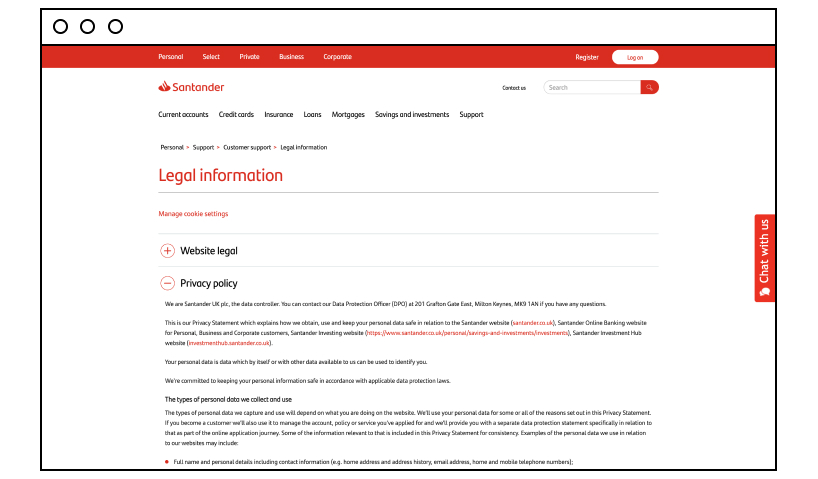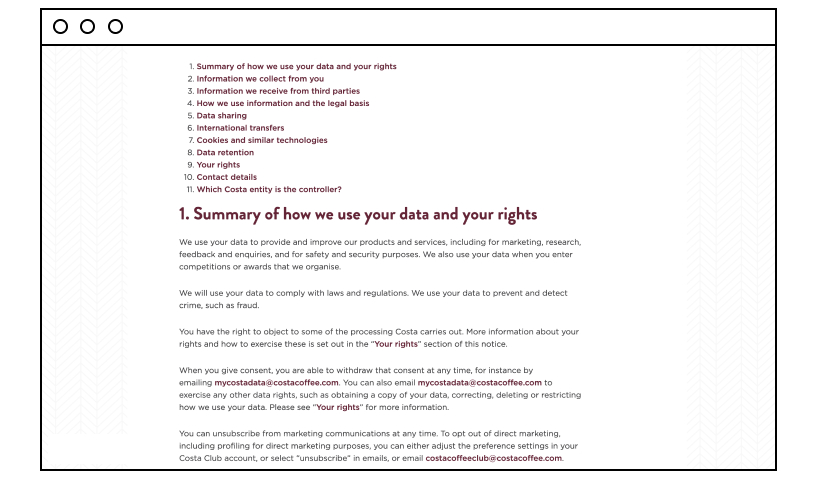All good business websites include some must-have pages that help visitors to understand their offers. These pages make it clear what they stand for, and they enable the business to be transparent about their intentions. The Boxmode website builder can help provide business owners with rich templates to create an engaging and informative site that showcases their business and includes all the most important pages to ensure they are compliant with the law.
A privacy policy page is arguably one of the most important pages.
What exactly is a Privacy Policy for a website? A Privacy Policy is a document that informs anyone who visits your site how you will handle any information it obtains. The policy will detail what kinds of information it plans to collect from visitors, such as the user’s name, address, credit card information, etc. It will also state why information is gathered and how the company will use it.

If you intend to collect or use your site visitors’ information, it is a legal requirement to have a Privacy Policy on your website. Any visitors or customers should be able to access and read the Privacy Policy so they can understand how their data will be used.
Privacy Policy best practices in the US include ensuring your policy is easy to locate on your site, usually at the footer of every page, and anywhere else you ask visitors to part with information. The key is to be completely transparent. Once you have written and published your policy, make sure you adhere to it.
Main Parts of a Privacy Policy
Putting together a Privacy Policy by yourself can be challenging if you are not familiar with the process. You must include all the main elements that make up a standard Privacy Policy and any additional parts that pertain to your unique business.
The required contents of the policy will vary and are dependent upon the applicable law. Different geographical locations and legal jurisdictions may well have additional rules, so it is vital to research these before you begin.

Typically, data and privacy laws are in place and applicable to any business that targets residents of a region, so a law can apply to your business regardless of whether it’s actually located in that region or not.
Below are the basic elements that every Privacy Policy should contain:
- Details of the site owner.
- Details of the kinds of data being collected. The visitor’s name? Address? Interests? Cookies? Email?
- Details of how the data is being collected.
- The legal basis for the collection. For example, this could relate to consent or local obligation, or it can relate to certain information that is internal to your service offering. Stating why you’re processing the personal data of users is crucial.
- The exact purposes for which the data is being collected? Being specific about what you need the information for is also essential. Will it be used for analytics? For email Marketing?
- Details of any third parties that will have access to the information. If you intend to allow third parties access to the information you collect, you need to state who they are.
- If transferring data across borders or overseas, you may also need to include how you intend to ensure this is done safely and compliantly.
- The users’ individual rights. Will users be allowed to request to see the data you collect? Will they be permitted to erase or block data collection? Will they be able to update or amend the data you have on them?
- The process you have in place to notify users and visitors of any updates or amendments to the Privacy Policy
- The effective date of the Privacy Policy
Ways to Create a Privacy Policy For Website
There are several different ways you can create your website’s Privacy Policy. It’s worth noting that the more kinds of information you intend to collect, and the more ways to intend to use that information, the more complex and rigorous your Privacy Policy needs to be.

Careful planning and consideration about what to include will ensure that you haven’t overlooked or left anything out and will make the writing stage much easier.
The planning stages
Consider the kinds of user information you want to collect through your site or app. At this stage, it’s also worth thinking about whether it is really necessary for your business to obtain it. Collecting only the information that is relevant and necessary will help keep your Privacy Policy much simpler.
Familiarise yourself with the processes you currently use to collect and process data. Remember, your Privacy Policy is there to reveal specific information to your users, so if you aren’t up to speed with exactly how your business does this currently, now is the time to find out.
It is also essential to make an effort to write your Privacy Policy in the most accessible language possible. Your policy should be written with the user in mind, so avoid complex language and legal jargon. Opt for plain language, short sentences, and a straightforward format that’s easy to navigate, using headings for clarity.

When you come to the writing stage, you will have several options:
#1 Write it yourself
You can attempt to write your Privacy Policy yourself. However, this is only advisable if you plan to collect minimal data and you have some experience handling this kind of legally binding content creation already.
#2 Use a privacy policy template
Alternatively, there are plenty of great resources available to help you create a robust Privacy Policy for your site. A good template will take you through each step so you can rest assured that you have input all the necessary information and haven’t left out anything important.
#3 Hire a professional to help you
A professional writer may be a good option if no one in your organization feels comfortable handling the task of creating a Privacy Policy for your website. Professional content writers often have specific experience or specialize in creating documents such as these, so they will be able to ensure your Privacy Policy contains everything it should.
#4 Hire an attorney
If your business’s needs require that you collect and use people’s data, and if this need is great and complex, then hiring an attorney to ensure that your Privacy Policy is in line with the law will give you peace of mind that you are compliant.
Privacy Policy Examples for Website
To help you better understand how to create a Privacy Policy, looking at some standard privacy policies for websites can help you. The best thing is to find some examples of Privacy Policies in the same industry in which your business operates. However, to help you, here are some excellent examples of basic Privacy Policies to give you a useful starting point from which to develop your own.
1. Santander’s Privacy Policy is written in clear, simple language and is short and sweet!

2. Costa Coffee’s Privacy Policy is broken down into short, easy-to-read sections, which users can jump to easily.

3. Berry Global starts with a clear statement that assures visitors it will only collect information with their prior knowledge and consent.

A Privacy Policy to Protect Your Customers and Your Business
Creating a Privacy Policy for your site doesn’t have to be stressful or complicated. Providing you follow the law’s requirements for protecting personal information and are committed to maintaining proper security measures within your business to safeguard information, you will be compliant. Use the tips above to create a helpful, transparent Privacy Policy to help your visitors know how you’ll collect and use their information. Remember, transparency is critical to any business’s success, so keep things simple. Don’t gather any information you don’t need, and don’t engage in any underhand data collection methods. The more honest you are with your customers, the more you’ll create a sense of trust and security that will encourage them to return to your site time and time again!

